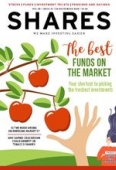Archived article
Please note that tax, investment, pension and ISA rules can change and the information and any views contained in this article may now be inaccurate.
Turn to well-run businesses when times get tough

The ability to successfully navigate endless market challenges is the sign of good management and a well-run business. Investors seeking examples should look no further than Finsbury Food (FIF:AIM) which has just served up an impressive set of full year results.
While you may think that baking bread and cakes isn’t challenging, this company is currently battling with a multitude of headwinds, any of which has the potential to cause a profit warning. Fortunately the business has so far coped very well and the underlying business looks healthy.
Understanding the risks around an investment is very important when you’re researching a stock. It is paramount that you appreciate what could go wrong, rather than simply lock on to what could go right and how much the end market is worth.
In Finsbury Food’s case, it is battling raw material price inflation, a consolidating customer base – namely Sainsbury’s (SBRY) and Asda – and a segment of its end market going through turmoil (being casual dining restaurants).
Against this backdrop it has managed to deliver 4% rise in annual adjusted pre-tax profit to £17.2m, a 10% hike in the dividend to 3.3p, a 10.5% reduction in net debt to £15.6m and maintained capital investment levels at £12.6m. On an unadjusted basis the results were distorted by closing a loss-making factory.
‘Management has delivered a stellar performance by controlling costs and maintaining margins in a challenging market environment,’ says Cenkos analyst Zane Bezuidenhout.
Finsbury Food’s chief executive John Duffy attributes the success to a tight focus on efficiency and the benefits of earlier investments.
While general food price inflation in the grocery sector is slowing down, bakery price inflation is still running at 2.5% to 3%, says Duffy, referring to items like flour, butter and eggs. ‘It is our job to work with our customers to try and avoid as much inflation feeding through to the consumer as possible,’ he adds.
The CEO says the relationship between Finsbury Food and its customers – the companies selling its goods rather than consumers – is increasingly collaborative in nature. This arguably puts Finsbury Food in a stronger position and means it isn’t creating products simply in the hope that a supermarket or retailer will buy them.
The latest performance should provide some reassurance to investors that the company has the skills to manage its challenges, which could get worse. Principally the risk is that prices will either have to go up or profit margins could fall.
Duffy seems relaxed about Sainsbury’s merging with Asda, despite fears among the supply chain that a larger business will demand cheaper prices and squeeze suppliers’ margins.
Finsbury Food potentially faces higher logistics and administration costs as a number of its butter and egg products are imported from Continental Europe. Brexit could increase custom border checks and require Finsbury Food to hold higher stock levels to ensure it has sufficient ingredients to hand.
It won’t be alone in having to deal with such issues and investors should brace themselves for a possible bumpy ride. Yet if you’re happy to invest in a small company, surely it is better to back one with a proven track record of dealing with problems rather than one that is simply hoping for the best? (DC)
Important information:
These articles are provided by Shares magazine which is published by AJ Bell Media, a part of AJ Bell. Shares is not written by AJ Bell.
Shares is provided for your general information and use and is not a personal recommendation to invest. It is not intended to be relied upon by you in making or not making any investment decisions. The investments referred to in these articles will not be suitable for all investors. If in doubt please seek appropriate independent financial advice.
Investors acting on the information in these articles do so at their own risk and AJ Bell Media and its staff do not accept liability for losses suffered by investors as a result of their investment decisions.

 magazine
magazine








